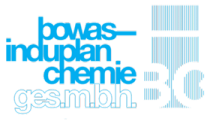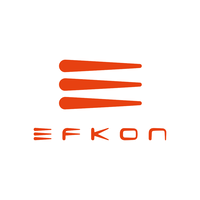"Transcriptional wiring" of cancer genes can be resolved using Lexogen's SLAMseq and QuantSeq technologies to facilitate drug discovery
"Transcriptional wiring" of cancer genes can be resolved using Lexogen's SLAMseq and QuantSeq technologies to facilitate drug discovery
VIENNA, April 5, 2018 /PRNewswire/ -- Identifying molecules that selectively modulate gene expression is highly desirable in drug development. However, standard RNA sequencing technologies and current metabolic RNA labeling methods are not able to identify direct and sequential transcriptional targets of regulators and substances with sufficient sensitivity. They either lack temporal resolution or suffer from lengthy and technically demanding protocols that produce inadequate signal-to-noise ratios, or prevent parallel assessment of global and transcript-specific effects.
Using a novel method for metabolic RNA labeling called SLAMseq, a team at the Research Institute of Molecular Pathology (IMP) at the Vienna BioCenter in Austria, in collaboration also with Boehringer Ingelheim, succeeded in characterizing the transcriptional response of cancer genes in a highly time-resolved manner, as reported today in the journal Science.
"Combining chemical-genetic protein degradation and SLAM-seq allowed us to do an experiment we have long been dreaming of: Eliminate a transcription factor within 30 minutes and directly measure changes in transcriptional output. We used it to answer long-standing questions about MYC and BRD4, but our approach can be applied to study direct transcription targets of any gene or pathway," says Johannes Zuber, a group leader at IMP who headed the study.
The study makes use of the high-sensitivity provided by SLAMseq (thiol (SH)-Linked Alkylation for the Metabolic sequencing of RNA), enabling straightforward time-resolved measurement of newly synthesized and existing RNA. The protocol was developed by the group of Stefan Ameres at the Institute of Molecular Biotechnology (IMBA) at the Vienna BioCenter, and can be performed in any standard cell culture lab. It adds only two steps to a conventional RNA-Seq experiment and is available to the research community as a kit and service from Lexogen.
For direct quantification of newly synthesized RNA by next-generation sequencing (NGS), the authors prepared RNA-Seq libraries from SLAMseq samples using Lexogen's QuantSeq 3' mRNA-Seq Library Prep Kit. In QuantSeq libraries, only the 3' ends of polyadenylated RNA are sequenced, which is a highly efficient way to quantify gene expression, especially in metabolic RNA-seq experiments where larger sample numbers incorporating multiple time-points and replicates are required.
"At Lexogen we believe that the opportunity provided by SLAMseq to trace the cellular regulatory circuits will boost the field of drug discovery. By coupling the automated data analysis pipeline SLAMdunk to the SLAMseq and QuantSeq technologies, Lexogen can now offer a highly integrated solution for this application and for time-resolved gene expression analysis experiments in general," says Lukas Paul, Lexogen's Senior Manager of Scientific Affairs.
Original Publication: Muhar et al, "SLAM-seq defines direct gene-regulatory functions of the BRD4-MYC axis", Science, DOI: 10.1126/science.aao2793
About Lexogen
Lexogen is a transcriptomics and next-generation sequencing company, focusing on the development of technologies for complete transcriptome sequencing. Their portfolio includes innovative molecular biology kits, software, and services for RNA-Seq. To learn more, visit www.lexogen.com and follow @lexogen.
Contact person at Lexogen
Jekaterina Aleksejeva
Senior Marketing Manager
E-Mail. jekaterina.aleksejeva@lexogen.com
View original content with multimedia:http://www.prnewswire.com/news-releases/transcriptional-wiring-of-cancer-genes-can-be-resolved-using-lexogens-slamseq-and-quantseq-technologies-to-facilitate-drug-discovery-300625061.html
SOURCE Lexogen



